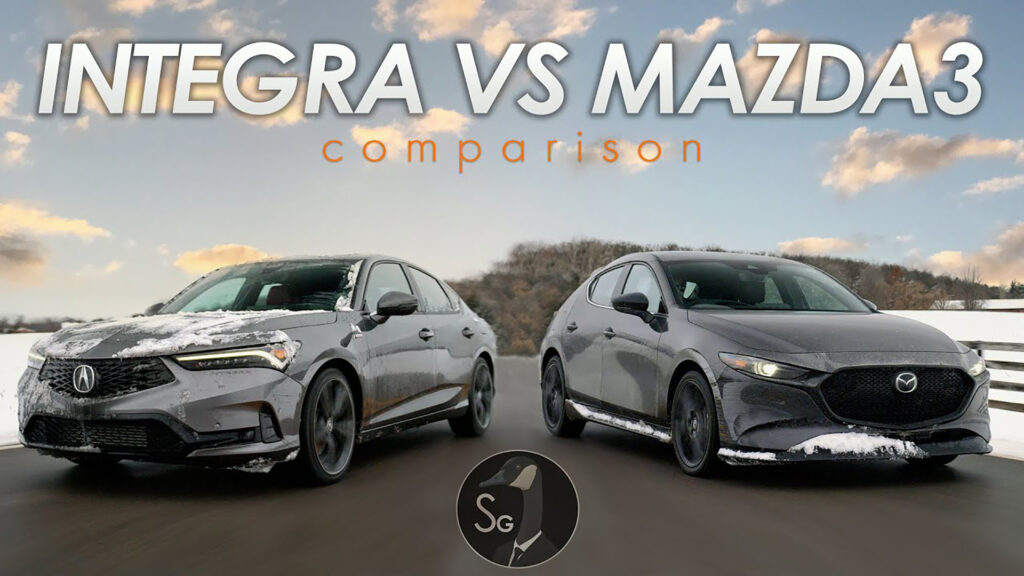When the new Acura Integra came out, many were comparing it to either its closest performance-oriented rivals like the Subaru WRX, Hyundai Elantra N, and VW Jetta GLI, or some of its more luxurious counterparts like the Audi A3 and Mercedes A-Class. However, there’s one competitor that many are overlooking: the Mazda3, and Savagegeese compares the two in his latest videos.
While many people might not think the Mazda truly punches in the same luxury space as the Acura, the Japanese brand has come a long way, especially with their newer models, and one could argue they’re akin to luxury vehicles without the official designation. On top of that, both cars are premium economy hatchbacks (the Integra is technically a liftback sedan), both feature turbocharged four-cylinders engines, and both start at around the same $36,000 price for their top trims.
Looking at exterior and interior styling, the Integra’s connection to the Civic is apparent. That being said, its design is very functional, especially when it comes to cabin utility. All the switchgear has nice actuation, blind spots are minimal, and the passenger and cargo areas are very roomy. The Mazda3, on the other hand, feels a lot more special and purposeful in its design, but that comes at the expense of practicality, namely with rearward visibility, cargo space, and rear seat legroom. With that in mind, the Mazda is a physically smaller car than the Acura (about 10 in / 25 cm shorter for a nearly identical wheelbase), so it’s somewhat understood.
See Also: 300+HP Acura Integra Type S Coming Next Summer With Type-R Engine, LSD And 6MT
Read More: 2024 Mazda CX-90 With Straight-Six Starts At $39,595, PHEV From $47,445
The mechanical differences between these two cars is where things get interesting. Powering the Integra is a turbocharged 1.5L inline-four making 200 hp (203 PS / 147 kW) and 192 lb-ft (260 Nm) of torque, which it sends to the front wheels only. The Mazda3 has a 2.5L turbocharged inline-four that makes a substantially greater 250 hp (253 PS / 149 kW) and 320 lb-ft (434 Nm) of torque, and crucially, it sends that power to all four wheels. Aside from the engine, the Acura has independent suspension all around compared to the Mazda‘s rear torsion beam setup. Additionally, it can be had with a manual whereas the Mazda cannot, however, its only non-manual option is a CVT compared to the Mazda’s traditional automatic.
In driving the cars back-to-back, the Mazda3 was much faster than the Integra in a straight line, but less engaging dynamically. That being said, the Mazda serves its purpose well as a quick, dependable daily, just don’t expect to be as comfortable at the limit as the Acura. And that philosophy essentially sums up the dichotomy between these two cars in their entireties.
The Mazda is more of more a plush luxury-esque car with some performance touches, whereas the Acura is more of a performance car that has been elevated to luxury status. If you can look past its suboptimal practicality, the Mazda3 is a more powerful, capable, and unique car, and it if you can look past the Integra’s lower power and nature as a reskinned Civic, it’s a more practical, better handling vehicle. Ultimately, as is the case with most of these comparisons, either option would be a solid choice, and the final decision really comes down to your needs as an owner.



